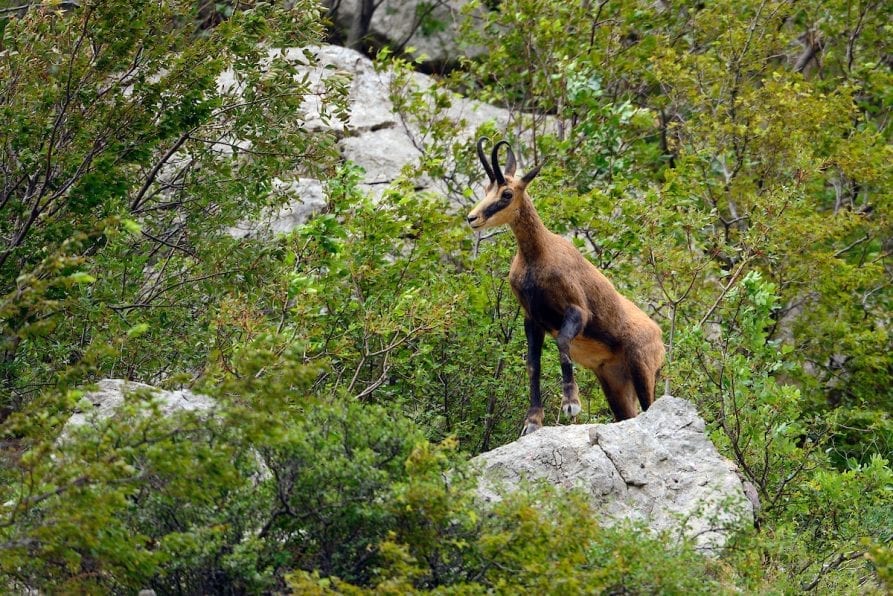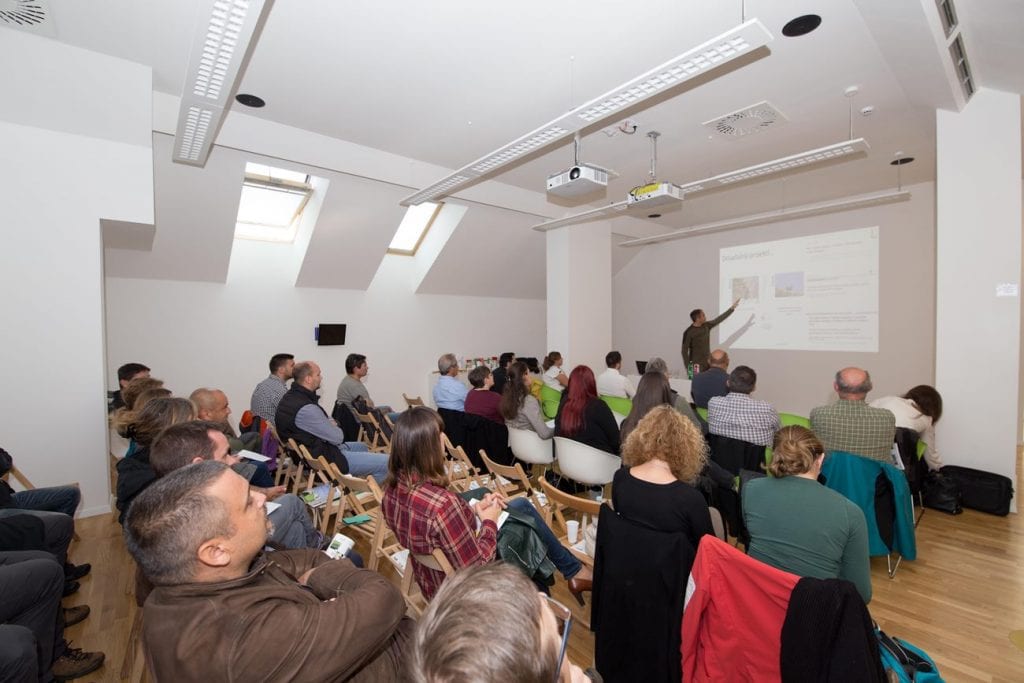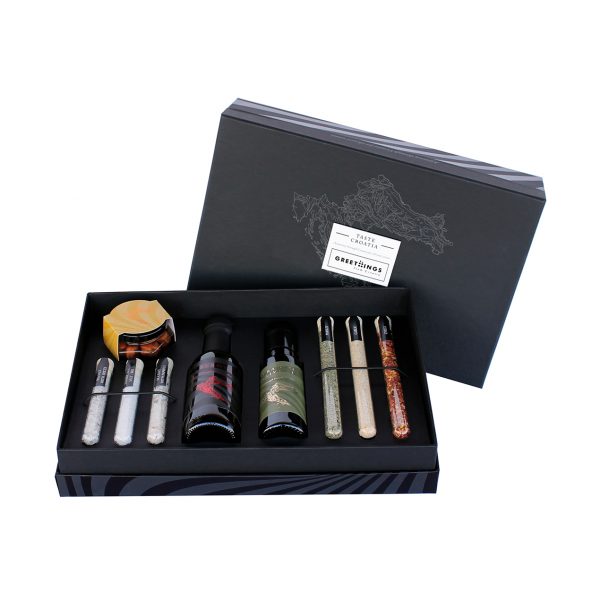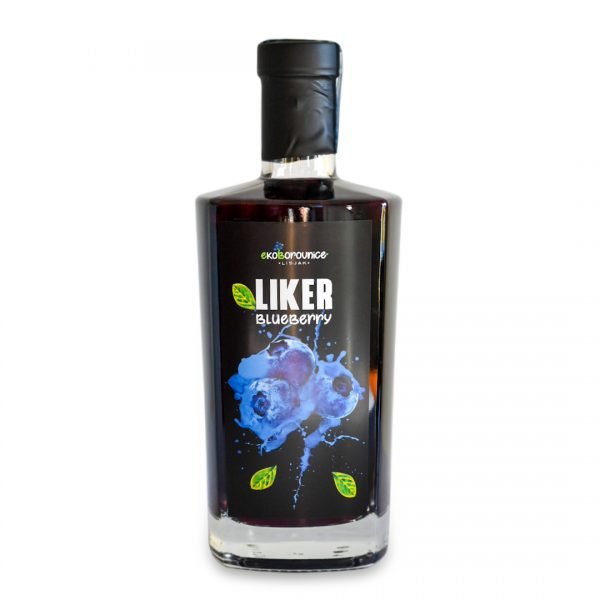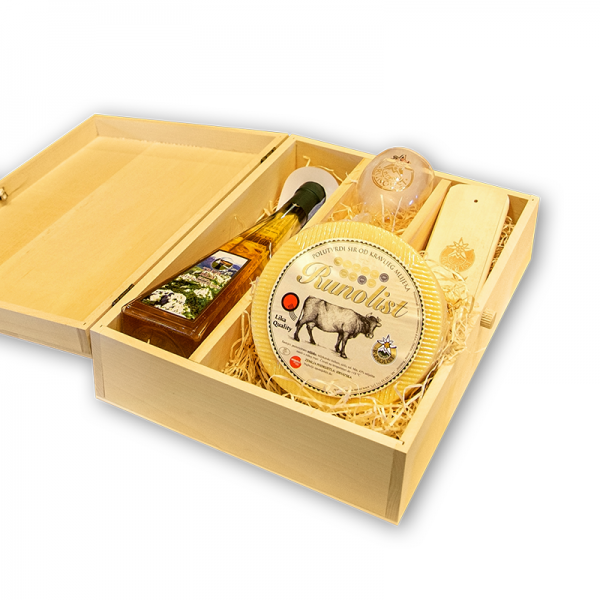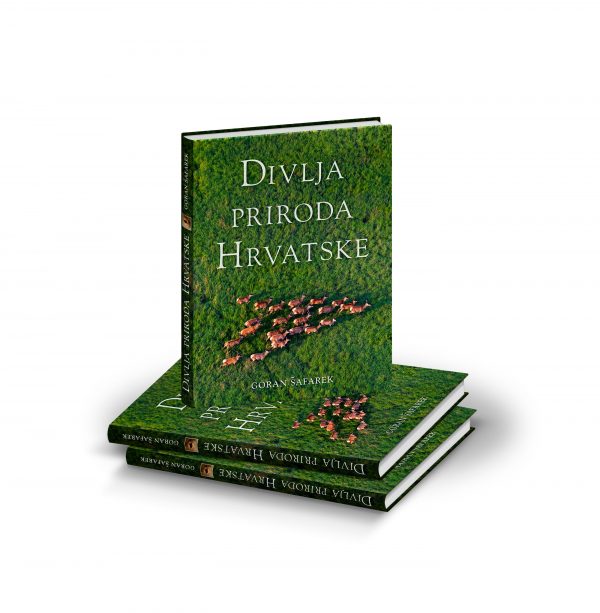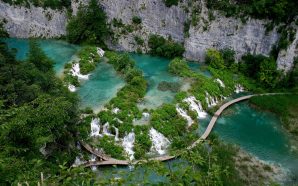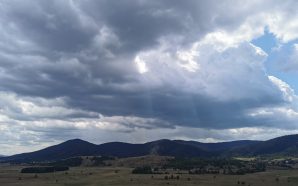At the beginning of October, a successful workshop on the Balkan chamois was held in the Croatian village of Krasno, close to the Velebit rewilding area.
The aim of the workshop, which was organised by the Faculty of Agriculture of the University of Zagreb – and held in cooperation with the Rewilding Velebit team, Croatian Hunting Association of Ličko-Senjska County and Northen Velebit National Park (which hosted the event) – was to present recent scientific research carried out as part of the BalkCham-DNA project, raise awareness of the status of the Balkan chamois (Rupicapra rupicapra balcanica), and explore new possibilities related to the animal’s conservation.
“The main goal of this workshop was the presentation of recent scientific research carried out within the project ‘BalkCham-DNA’ project as evidence of the distribution and vitality of endangered Balkan chamois,” says Professor Nikica Šprem of the University of Zagreb’s Faculty of Agriculture, the keynote speaker at the event. “We also wanted to raise awareness of the status of the Balkan chamois population and explore new possibilities for conservation cooperation.”
The chamois is an extremely agile yet timid goat-antelope with short hooked horns, found in mountainous areas of Europe from Spain through to the Caucasus. Although the chamois is widely known as a high altitude species, the Balkan chamois, which is larger than the alpine subspecies, can be found from sea level right through to heights of 1200 metres.
One of seven chamois subspecies, the Balkan chamois disappeared from the Velebit Mountains around 100 years ago, mainly as a result of hunting, poaching and habitat loss.
While it was reintroduced around 30 years ago and can now be seen in the high altitude areas of the region again, the total population – which is distributed across the mountain ranges of Croatia, Bosnia and Herzegovina, Montenegro, Serbia, Albania, Greece, Macedonia and Bulgaria – is now thought to number less than 1000 animals.
The chamois primarily requires open rock habitats above the forest line. Throughout the Balkans populations are fragmented and the connections between them are not well understood. The small population size and the low genetic variability of the Balkan chamois makes it highly vulnerable. It is clear from research that further genetic analysis is required to determine the best course of action for the animal’s future conservation and management.
https://www.instagram.com/p/BfD8mcJnalF/
The BalkCham – DNA project, overseen by the University of Zagreb’s Faculty of Agriculture , has seen evidence collected on the distribution and health of the Balkan chamois in Croatia.
The results of the project were presented to workshop participants by project leader Professor Nikica Šprem. In his lecture he also outlined chamois research and trends from a European perspective, and highlighted the need for action plans and better protection for the animal in the Velebit.
The workshop was well attended, with participants including representatives of the Northern Velebit, Risnjak and Paklenica National Parks, the Velebit and Biokovo Nature Parks, and the Croatian Hunting Association.
https://www.instagram.com/p/Bbe3W_6A8Vs/
Davor Krmpotić, the Rewilding Velebit team leader, pronounced the event a success.
“The chamois, an iconic animal in Croatia, is vital for the maintenance of subalpine pastures and as prey for large carnivores,” said Krmpotić after the event. “Unfortunately in our areas it not recognised as important and remains unprotected. The Rewilding Velebit team is very happy to support such events and projects, especially when the goal is to protect such an important species.”
PHOTO: Rewilding Velebit

